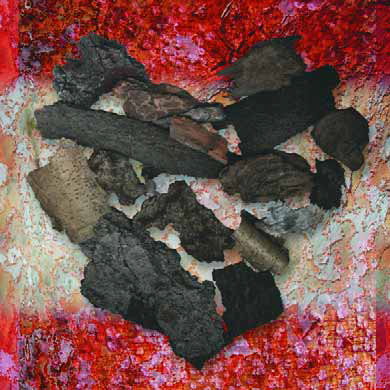maintenance
It's a plain fact: Few designers weigh maintenance as heavily as other elements of a design when creating gardens for their clients. Most will routinely ask whether the client wants a low-maintenance environment or one that requires a little more work and may yield a greater abundance of flowers or other desirable features, but the consideration typically ends there. And this is so despite the fact that by leaving maintenance out at the design level, landshapers often doom themselves to
Beautiful gardens make us happy. When we walk through or by them on the way to our daily activities; when we happen upon them while driving from one place to another; when we deliberately make them our destination - whatever the circumstances, beautiful gardens bring smiles to our faces and a sense of balance and serenity to
The very existence of floating islands seems counterintuitive. Are there really chunks of earth solid enough to support our weight while drifting over the surface of a body of water? Can these floating masses even support the weight of trees, animals or even human dwellings? The fact is that floating islands do exist on six of the seven continents and sometimes on the oceans between. Some do have trees growing on them and do support the weight of humans (and even grazing cattle). Some are, in fact, hundreds of feet across and are called "home" by their inhabitants. These naturally occurring, waterborne vessels embody a fascinating subset of natural observation and are generally unknown - even though they
It's a fact: A great many of the ponds and lakes in the western United States are simply not part of nature's scheme. Whether used for water retention, landscape beautification, fishing or swimming, these artificial, man-made bodies of water are inclined (and in some cases doomed) to be troubled, usually because of fertilizer- and pesticide-laced runoff from surrounding developed areas. Indeed, some of these problem watershapes are filled with just about the worst water the environment has to offer. As our business has developed, a large portion of what we do has focused on setting things right in these troubled watershapes and
When it comes to watershapes designed for human interaction - including pools, spas and fountains - the chemical treatment of the water is a key safety issue that can be handled in a variety of ways. Indeed, says water-chemistry expert Jeff Freeman, so many products and so many approaches are available that the average designer or builder could probably use a bit of guidance to help them keep everything straight, both for themselves and their clients.
In my work as a landscape architect and designer/builder of mostly residential swimming pools, I concede that I've never really given much thought to the subject of maintenance. Sure, the watershapes I've designed have proper hydraulic and circulation systems as well as correctly sized filtration systems, the proper number of skimmers and so forth, but beyond that, the specifics of swimming pool care have been beyond my concern. So I've let the terminology of water chemistry, for example, become a foreign language to me, and I've never known much about things like water testing, pH or sanitizer residuals. Through the years, however, I've come to believe that this is not a situation for a designer/builder in which ignorance is bliss. This is partly because I now work for a firm that runs a retail store with a service department and I interact with those folks on a regular basis; but it's also because more and more of my design/installation clients are asking me
So often, the art and science of invention begins with the study and appreciation of nature. While growing up in Wisconsin, I was repeatedly exposed to the naturally occurring islands often found floating on bodies of water amid the conifers in the northern, peat-bog region of the state. I couldn't help noticing that these islands were exactly the best places to go fishing. They were just terrific, presenting a structure under and around which fish, for whatever reason, loved to spend their time. Moreover, every floating island I've seen in nature is host to all sorts of flowering plants including American Speedwell, Monkey Flower, Blue Flag and even examples of the few native varieties of North American wild orchids along with incredible varieties of other broad-leaf plants, grasses and even trees. In many cases, I've seen species that don't abound in the surrounding environment but
Our projects generally take two forms. On the one hand, we're called upon to "heal" ailing bodies of water that have been set up with inadequate or improperly functioning circulation and filtration systems. Although other people's mistakes mean good business for us, I won't say that we ever look forward to seeing potentially beautiful ponds or lakes cursed by unappealing or even unhealthy water conditions. On the other hand, we often have the opportunity to join a project at the design phase and handle the installation as well, applying what we know about water quality from the first conceptualization of the watershape. That's always a welcome prospect: Not only is it exciting to
Water and cement-based materials interact in so many ways and on so many levels that it's tough to sort everything out. From initial issues of hydration and curing to a range of longer-term, maintenance-related concerns, says chemistry expert Jeff Freeman, cementitious products in submerged environments react so distinctly to water's presence that it is indeed essential for watershapers to consider what's up when putting them together.






















